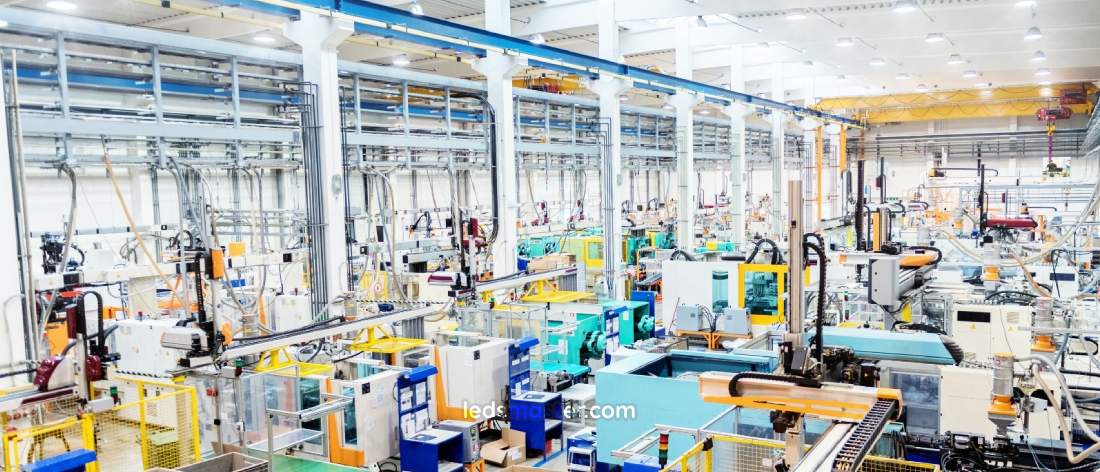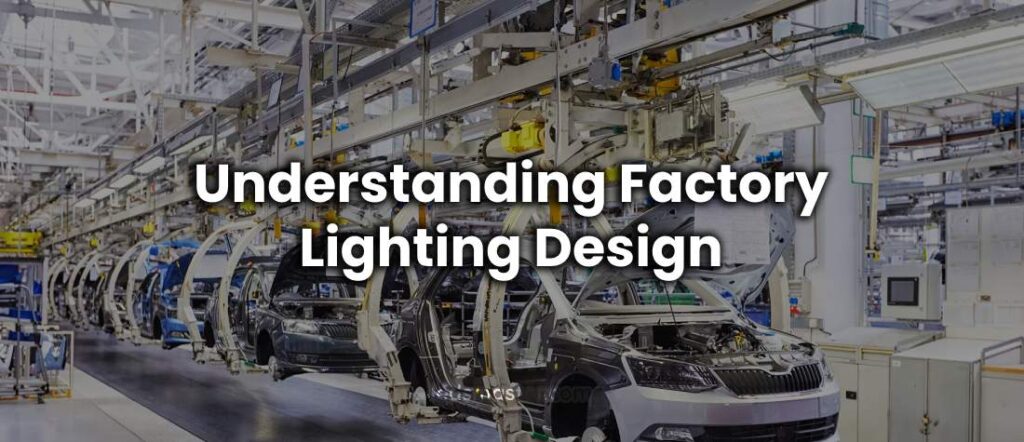To enhance worker productivity and ensure workplace safety, proper factory lighting is crucial. Each manufacturing plant—whether for automobiles, food, building materials, clothing, or specialty items like cheesecakes—requires tailored lighting solutions. LED factory lights designed for high or low temperatures are essential for maintaining continuous operation, while shock and explosion-proof lighting helps withstand unpredictable events.
Table of Contents
ToggleThe Trend of LED Replacement
LED lighting has emerged as the preferred option for industrial settings due to its superior efficiency and performance compared to traditional lighting technologies. For example, a 400-watt LED can replace metal halide or fluorescent flood lamps that typically consume between 1000 to 1500 watts. This shift results in up to a 75% reduction in energy usage while delivering equivalent or even better illumination. The significant drop in electricity consumption not only lowers operational costs but also reduces the facility’s carbon footprint. Additionally, LEDs have a longer lifespan than traditional lamps, minimizing the frequency of replacements and associated maintenance costs.
Similarly, a 750-watt LED light can serve as a retrofit for older halogen lighting systems that range from 3000 to 5000 watts. Halogen lights are notorious for their high heat output and inefficient energy use, converting much of the electrical power into heat rather than light. By switching to a 750-watt LED, facilities can achieve the same level of brightness with up to 85% less energy consumption. This transition not only enhances energy efficiency but also decreases heat emission, contributing to a cooler working environment and further reducing cooling costs. The longevity and durability of LEDs offer additional benefits, making them a cost-effective and environmentally friendly choice for factory lighting.
Industrial Lighting Design for Factory

Designing effective factory lighting involves a comprehensive understanding of the specific lighting needs for various areas within a manufacturing facility. Key factors include the required brightness, power specifications, and the ability of lighting fixtures to withstand extreme temperatures.
Illumination Levels for Different Areas
Main working areas, such as production lines, require illumination levels of approximately 500 lux to ensure efficient operation. However, tasks that involve delicate assembly or precise work demand higher levels of brightness, ranging from 600 to 1000 lux, to facilitate accurate and detailed tasks. Different sections of a factory each have unique lighting needs.
| Area | Recommended Lux Level |
|---|---|
| Factory Aisles | 50 to 100 lux |
| Goods Storage Areas | 150 to 300 lux |
| Offices | 200 to 300 lux |
| Production Lines | 500 to 750 lux |
| Quality Control Zones | 600 to 900 lux |
| Precise Mechanical Work | 600 to 1000 lux |
Calculating Power Levels
Selecting the correct power level for lighting involves calculating the total lumen output needed for each area. For instance, in a 1000 square meter environment, achieving the desired illumination would require approximately 200,000 lumens. This translates to an estimated power consumption of around 1500 watts of LED lighting.
Developing a Detailed Photometric Lighting Plan
This preliminary calculation provides a basic estimate for planning purposes. For a more accurate and tailored lighting solution, a detailed photometric lighting plan, developed with the assistance of a lighting designer, is recommended. This ensures that all lighting needs are met effectively, providing optimal illumination for productivity and safety in the factory environment.
Tailoring Factory Lighting for Extreme Temperature Conditions
Factory lighting must be tailored to withstand the extreme temperature conditions typical of various industrial environments. Ensuring reliable performance in both low and high-temperature settings is essential for maintaining product quality and operational efficiency.
Low-Temperature Environments
In low-temperature settings, such as cold storage units within a factory, it is crucial to use lighting that performs reliably at extremely low temperatures. LED lights designed for such environments can operate efficiently at temperatures as low as -40°C. Traditional lighting solutions often generate excessive heat, which can negatively impact the quality and shelf life of temperature-sensitive products like food. By contrast, LED lights produce minimal heat, helping to maintain a consistently low ambient temperature. This not only preserves the integrity of the products but also makes LEDs an excellent choice for other demanding environments, such as heavy industries like mining, where conditions can be similarly harsh.
High-Temperature Environments
In high-temperature environments, effective heat management is equally essential to ensure the longevity and performance of lighting fixtures. LED lights used in such settings must be equipped with robust heat sinks to prevent damage from prolonged exposure to high temperatures. The LEDs in question feature ultra-high-efficiency chips, with a luminous efficacy of 170 lumens per watt, and an advanced thermal management system that reduces heat resistance by 80%. This design allows the LEDs to operate reliably even in extreme conditions, such as being submerged in 100°C boiling water. Such features ensure that the lighting remains durable and functional, contributing to a safer and more productive work environment despite challenging temperature conditions.
High Bay Factory Lighting System

Color Rendering Index
In industrial settings, high bay lighting systems play a critical role in ensuring accurate color rendering and cost efficiency. Our high bay LED lights provide a Color Rendering Index (CRI) ranging from 80 to 90. This high CRI is crucial for industries that require precise color assessment, such as paint manufacturing, where accurate color representation is essential for quality control. LEDs with a high CRI enable workers to inspect finished products with greater accuracy, reducing the likelihood of color discrepancies and ensuring product quality. In contrast, traditional lighting systems, such as fluorescent and metal halide lights, typically offer a lower CRI of 50 to 65, which can lead to significant color distortions and make it challenging to accurately assess product colors.
Cost Efficiency
Cost efficiency is another vital aspect of high bay lighting systems. The power consumption of lighting fixtures increases with ceiling height, impacting operational costs. For instance, using a 5000-watt LED light in a warehouse results in a daily running cost of $14.40 and a monthly cost of $423. In comparison, a traditional halogen lighting system of similar capacity would incur a much higher daily cost of $144 and a monthly cost of $4,230. This stark difference highlights the substantial savings achievable with LED technology.
| Lighting System | Daily Cost | Monthly Cost |
|---|---|---|
| 5000-watt LED | $14.40 | $423 |
| 50000-watt Halogen | $144 | $4,230 |
Initial Costs and Tailored Solutions
The initial cost of factory lamps can range from $3,000 to $20,000, influenced by factors such as brand, size, and specific lighting requirements. Accurate cost assessments can be provided upon request to tailor solutions to specific needs.
Maintenance Costs
Maintenance costs also significantly impact the total cost of ownership. Traditional lighting solutions, such as metal halide or mercury vapor lamps, often suffer from high lumen depreciation, necessitating frequent replacements. In contrast, LED lights offer a much longer lifespan, approximately 120,000 hours. This translates to about 10 years of continuous operation or 41 years with an average usage of 8 hours per day. The extended lifespan of LEDs reduces the frequency of replacements and associated labor costs, providing long-term savings and minimizing operational disruptions.
Conclusion
Transitioning to LED lighting addresses many issues associated with traditional light sources, such as inefficiency, high heat emission, and frequent maintenance requirements. LEDs not only offer significant energy savings and lower operational costs but also provide superior color rendering and durability, essential for precise tasks and extreme temperature conditions. By implementing tailored LED solutions, factories can achieve improved illumination quality, reduced energy consumption, and decreased maintenance, ultimately fostering a more efficient and safer work environment.

